
Scattered strong to severe thunderstorms will persist over the central to southern High Plains this weekend with a severe weather and flash flooding threat. A late season storm will bring low elevation rain and high elevation snow to portions of California, Nevada and Oregon through the weekend. Winter Weather Advisories are in place for the Sierra for snow totals of 3-6", locally higher. Read More >
Overview
Tropical Storm Ophelia formed about 150 miles southeast of Wilmington, NC during the afternoon of Friday (9/22) when a non-tropical area of low pressure acquired some tropical characteristics (including convection near the center which had a warm core). Ophelia steadily tracked northward before making landfall in Emerald Island, NC (in the southeast part of the state) at 6:20 AM on Saturday, 9/23 as a tropical storm with 70 mph winds. Ophelia gradually weakened (and lost tropical characteristics) as it tracked northward toward the Wakefield CWA during the day on Saturday. Ophelia tracked northward roughly along the I-95 corridor during the afternoon and evening hours on Saturday, reaching the Richmond Metro Area while weakening to a depression. Ophelia became an post-tropical cyclone shortly thereafter and exited to the north/northeast on Sunday. Northeast winds gusted as high as 50-65 mph near the VA/NC coast well in advance of Ophelia Friday evening-early Saturday morning (due to a tight gradient between high pressure over New England and the tropical storm to the south), with 25-45 mph gusts farther inland. Winds turned to the SE near the coast on Saturday and a few gusts to 40-45 mph were observed (while winds remained NE inland west of the low track). Bands of rain (with embedded squalls/thunderstorms near the coast) began to move in late Friday and persisted through much of Saturday (although the rain largely ended near the coast by midday Saturday). As the center of the storm tracked up I-95 during the afternoon and evening, an area of heavy rain accompanied it, with rainfall rates of 0.5-1.5"/hour observed for a few hours from Emporia, VA to the Richmond Metro Area. Some areas saw 3-4" of rain from this band. As a result, there were numerous road closures but no reports of water rescues as rain rates were relatively lower than what we have seen during past tropical systems as PWs were only 1.75-1.95" in the Richmond Metro (near the center of the storm) as Ophelia was losing tropical characteristics. Normally, PWs are easily 2.5"+ in the center of systems that are fully tropical. Also, antecedent conditions were quite dry.
In addition to the rainfall, moderate to major tidal flooding was observed across much of the area Friday night through Saturday evening. Water levels approached (or even slightly exceeded) +3ft MHHW in a couple spots in the lower bay/lower James River. In fact, water levels at Jamestown were the highest observed since 2016 (which caused disruptions to the Jamestown-Scotland Ferry). Tidal flooding was even observed as far up the James River as Hopewell. See "Tidal Flooding" section for more details. Last but not least, one brief EF-0 tornado was observed in Belvidere, NC in the northern part of Perquimans County during the morning on 9/23.
For the complete Post Tropical Cyclone Report (PSH), see https://www.weather.gov/akq/TropicalEventSummary.
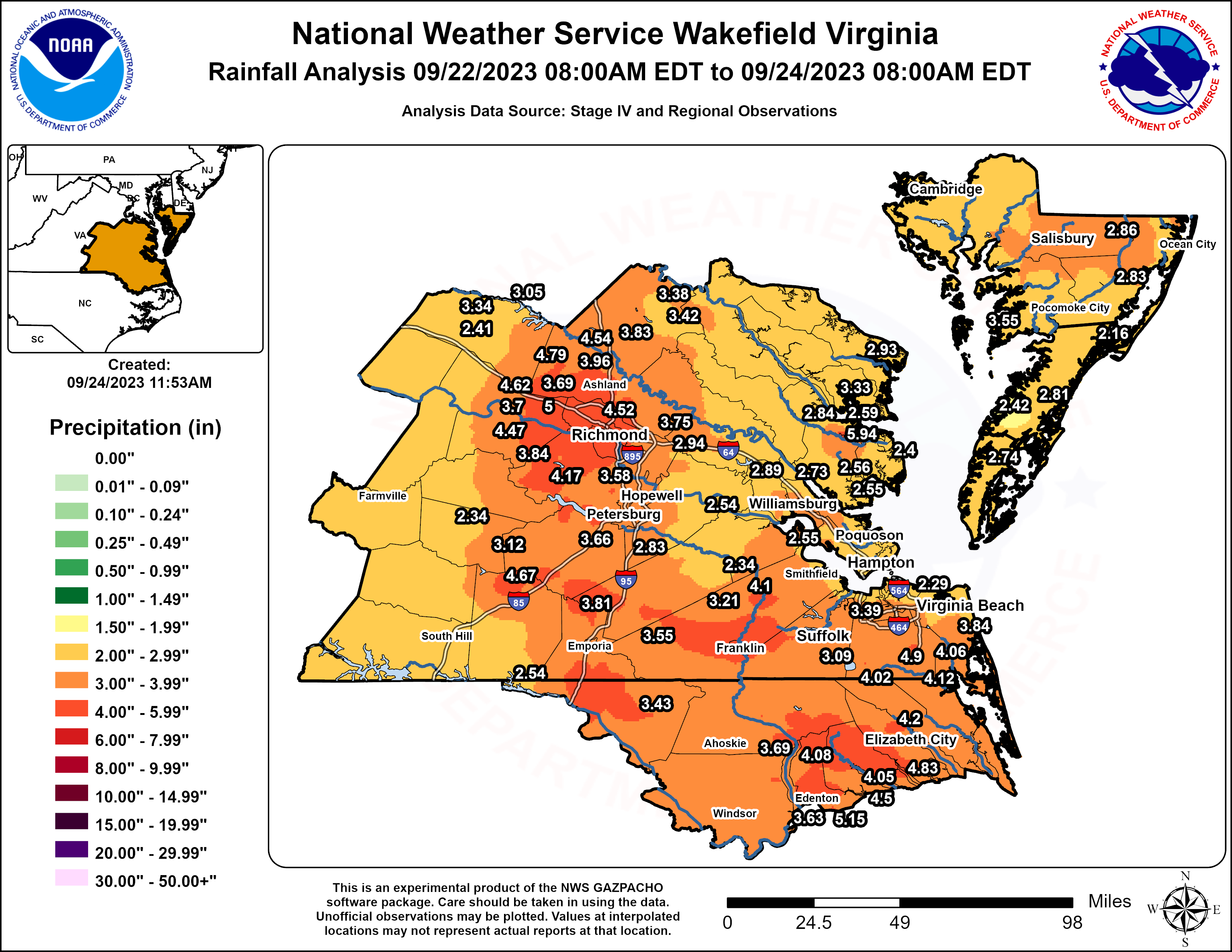 |
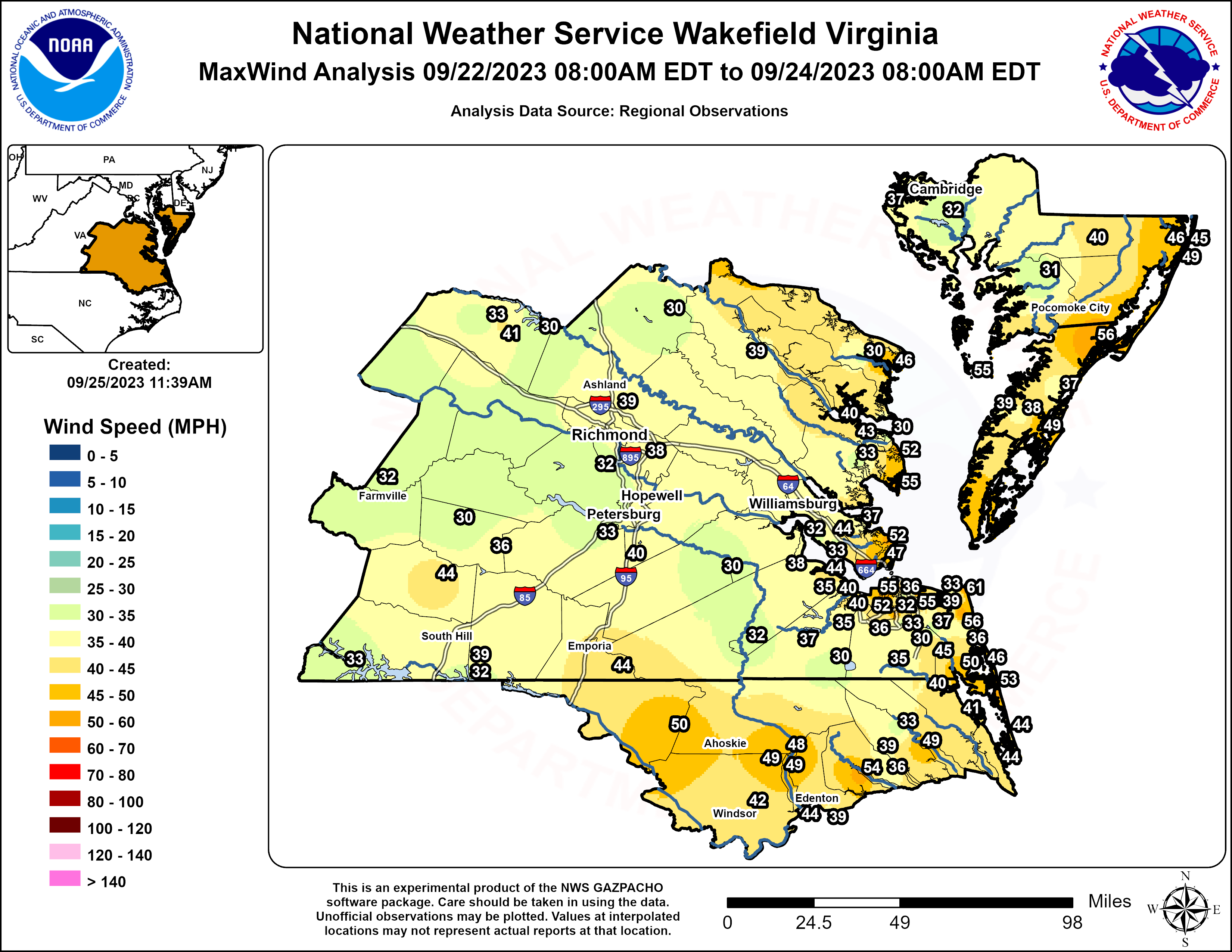 |
| Storm Total Rainfall Map (Click to Zoom In) | Max Wind Gust Map (Click to Zoom In) |
Tornadoes:
|
Tornado - 1 SSE Peach, NC
Track Map 
Downloadable KMZ File |
||||||||||||||||
The Enhanced Fujita (EF) Scale classifies tornadoes into the following categories:
| EF0 Weak 65-85 mph |
EF1 Moderate 86-110 mph |
EF2 Significant 111-135 mph |
EF3 Severe 136-165 mph |
EF4 Extreme 166-200 mph |
EF5 Catastrophic 200+ mph |
 |
|||||
Flooding
Hydrographs
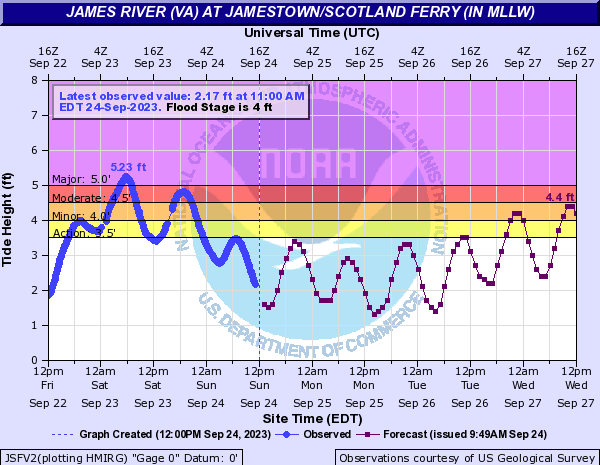 |
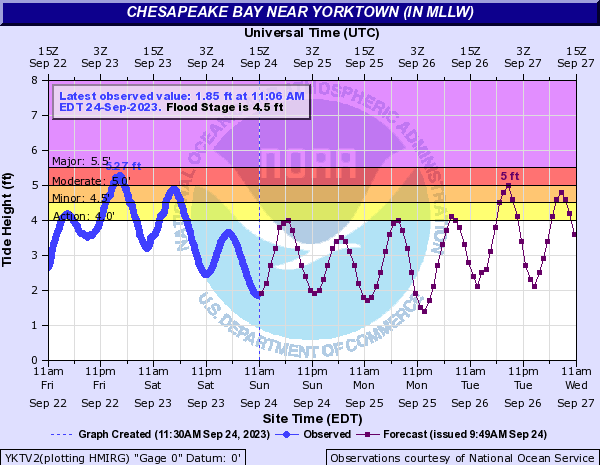 |
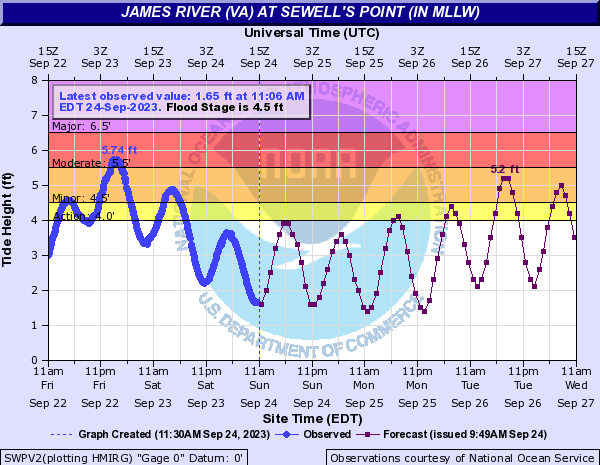 |
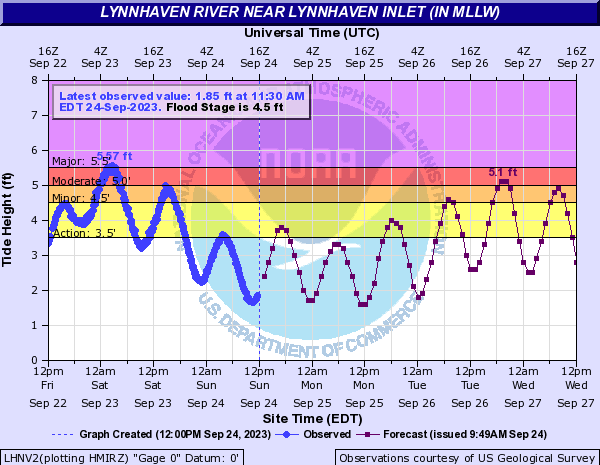 |
| Jamestown, VA | Yorktown, VA | Sewell's Point, VA | Lynnhaven Inlet, VA (VA Beach) |
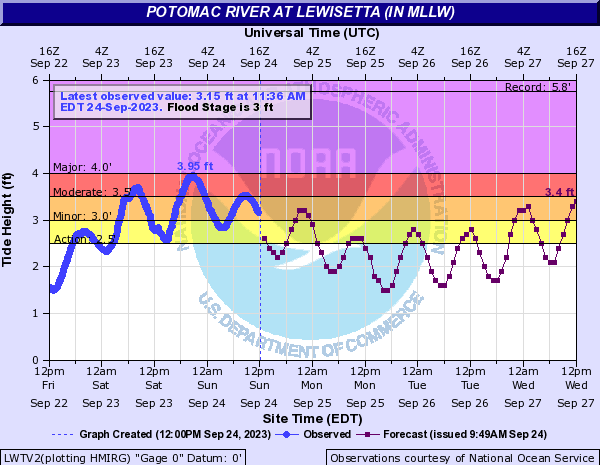 |
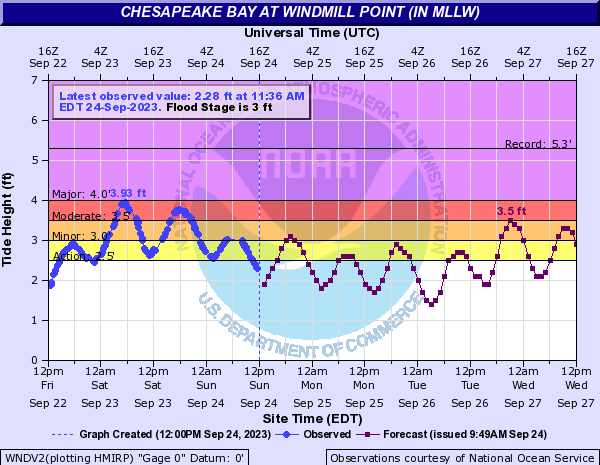 |
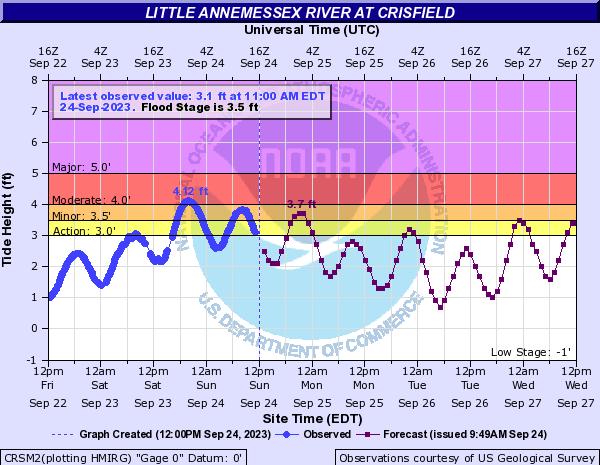 |
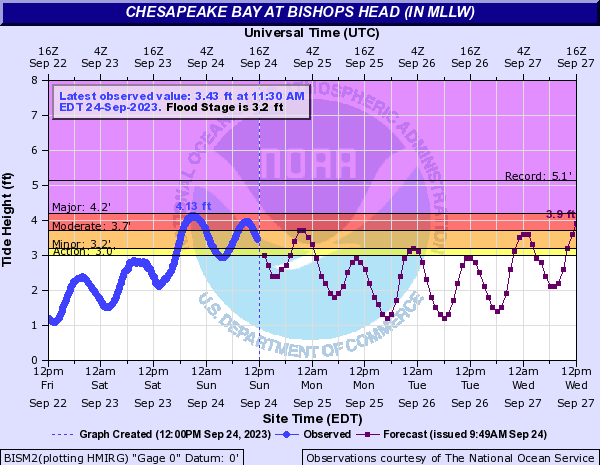 |
| Lewisetta, VA | Windmill Point, VA | Crisfield, MD | Bishop's Head, MD |
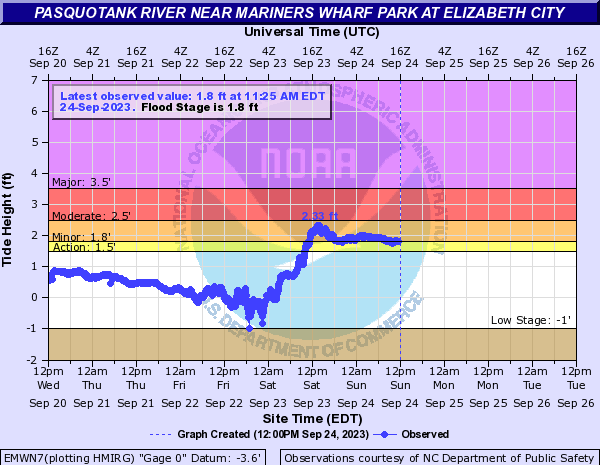 |
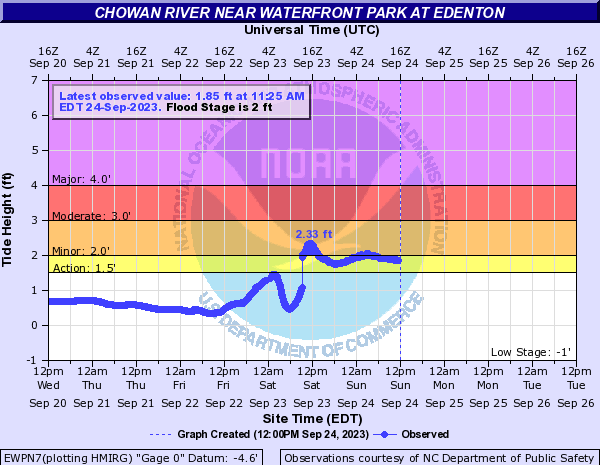 |
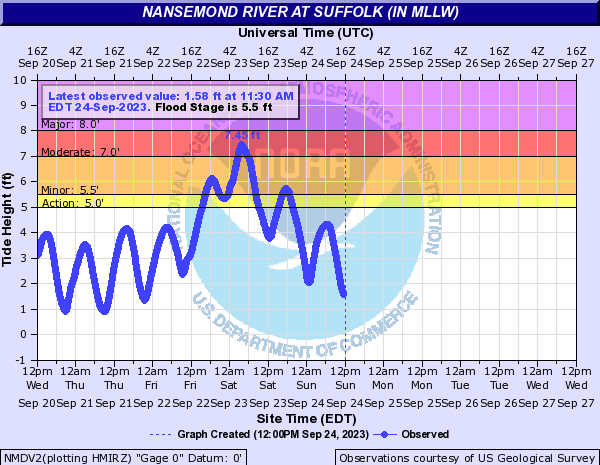 |
| Elizabeth City, NC | Edenton, NC | Nansemond River in Suffolk (VA) |
Photos
Selected Tidal Flooding Photos
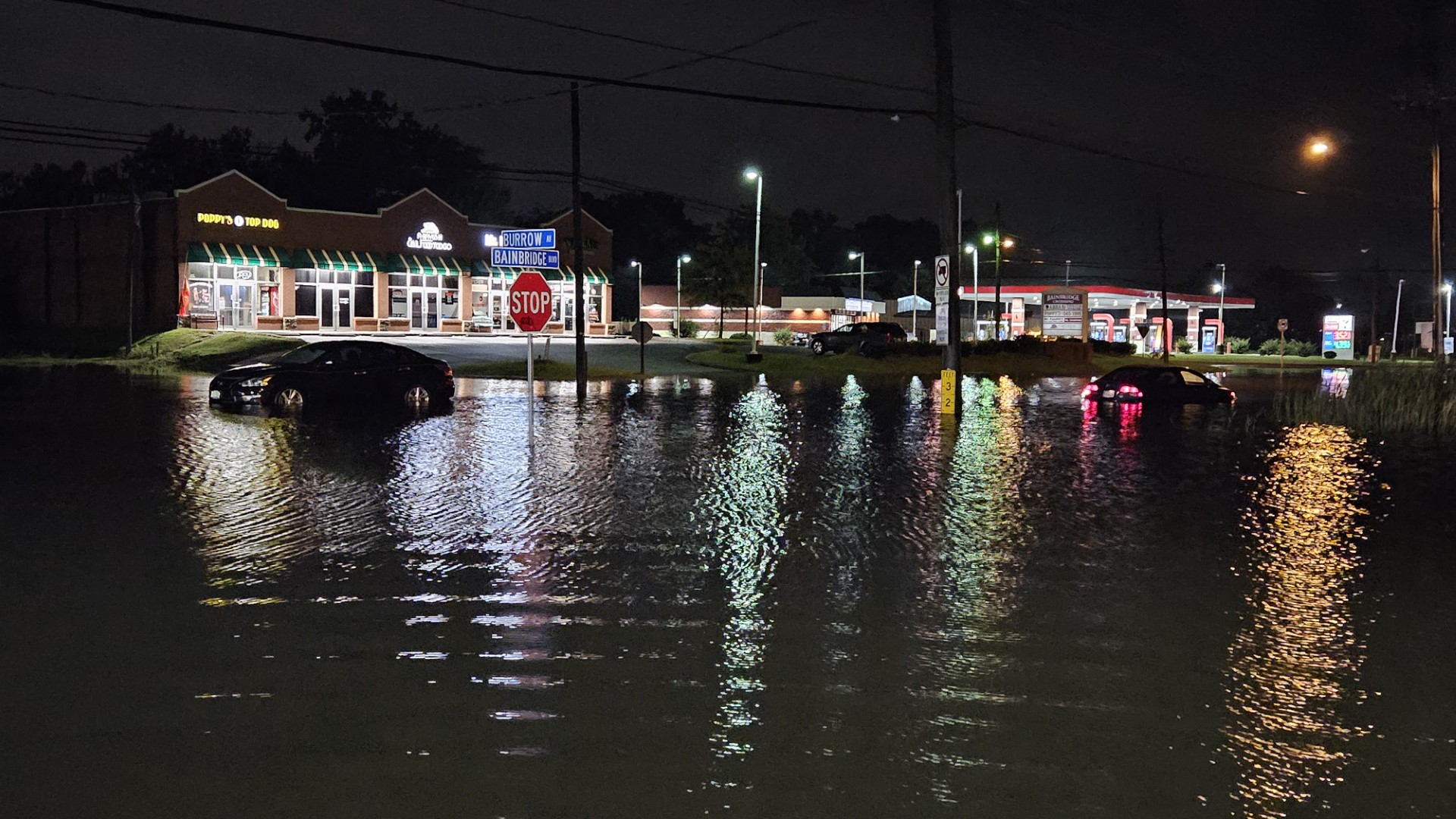 |
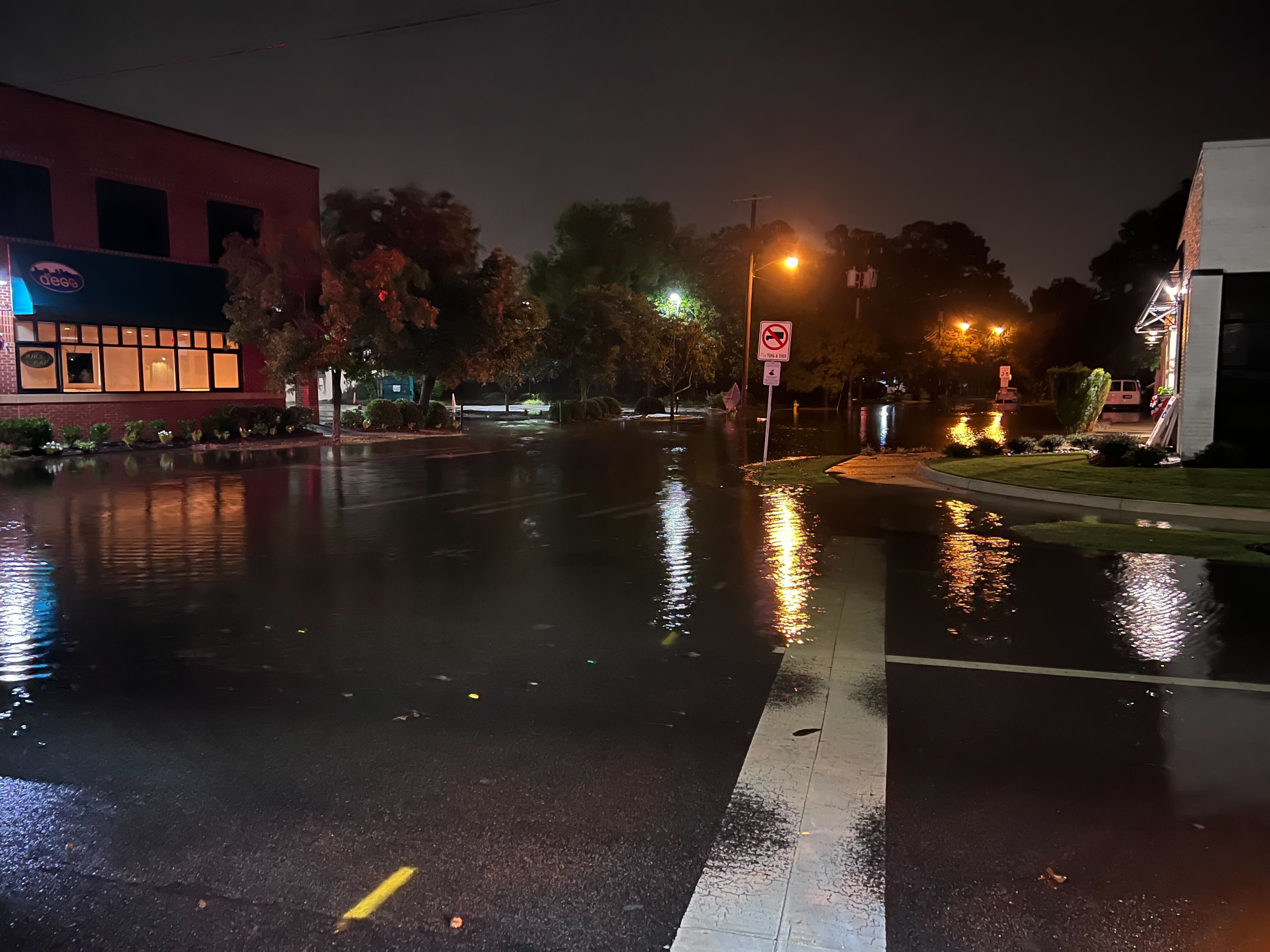 |
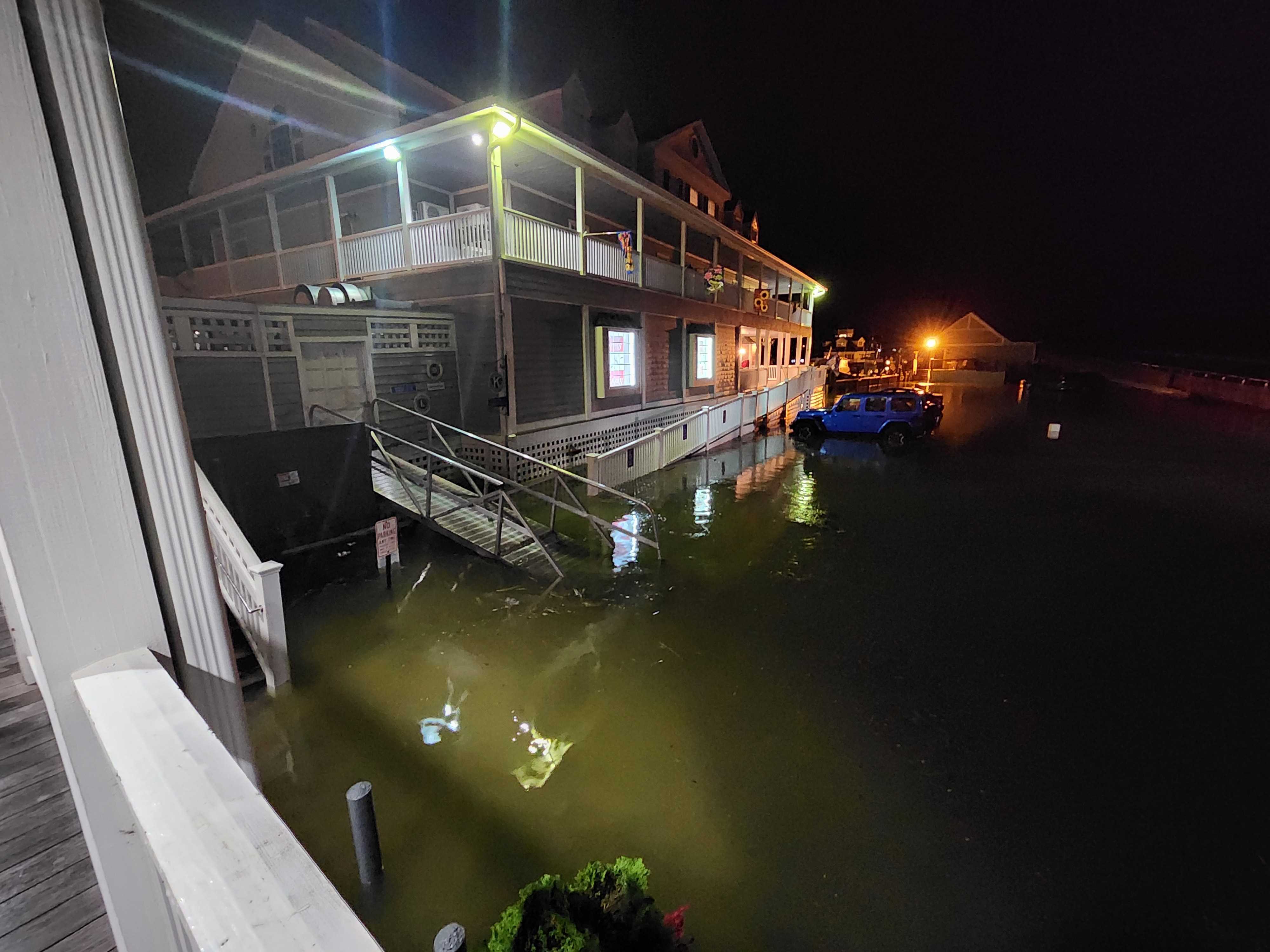 |
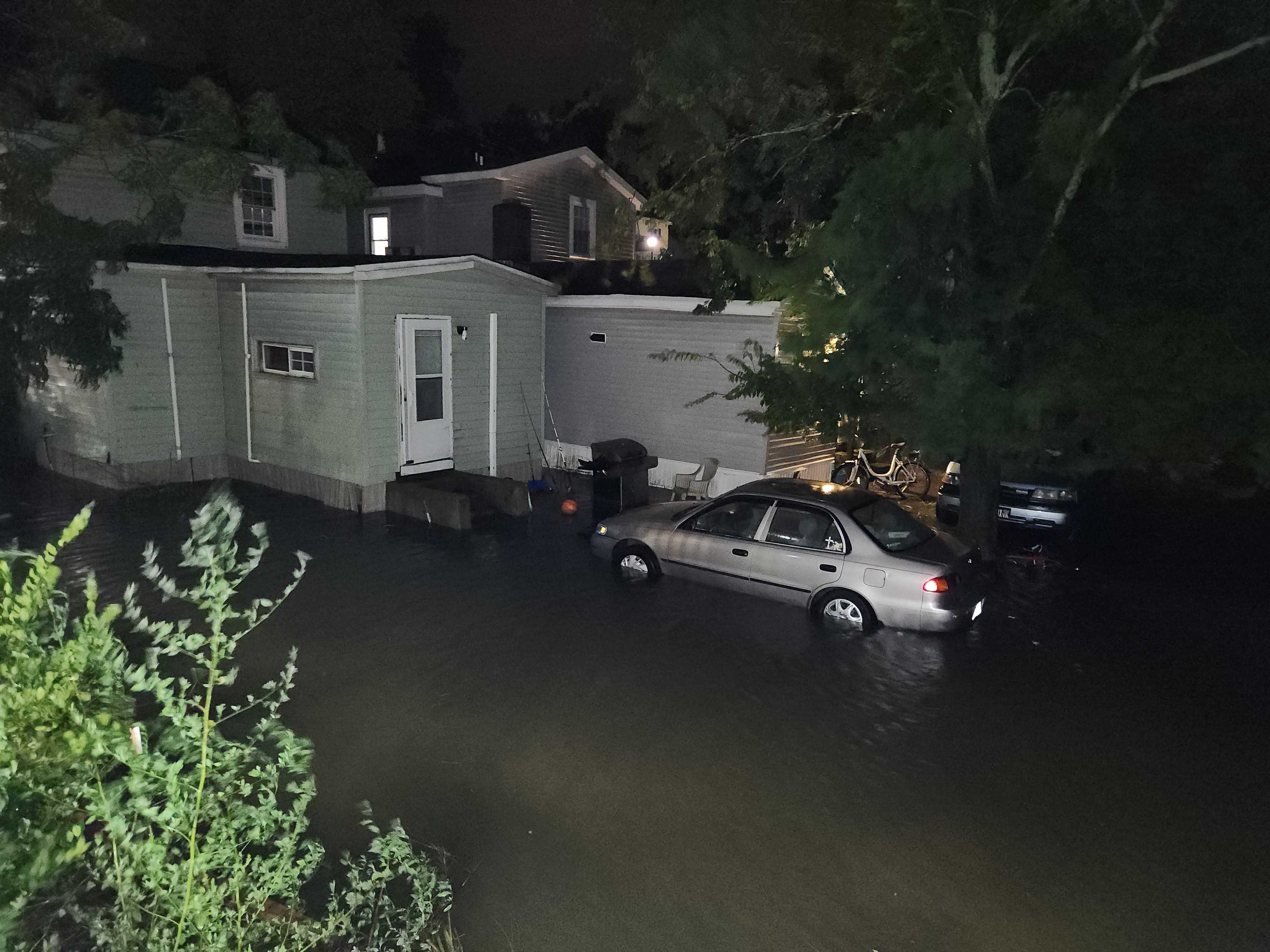 |
| Tidal Flooding in Chesapeake | Tidal Flooding in Norfolk (credit: Craig Moeller) |
Tidal Flooding in Smithfield, VA (credit: Jeff Orrock) |
Tidal Flooding in Smithfield, VA (credit: Jeff Orrock) |
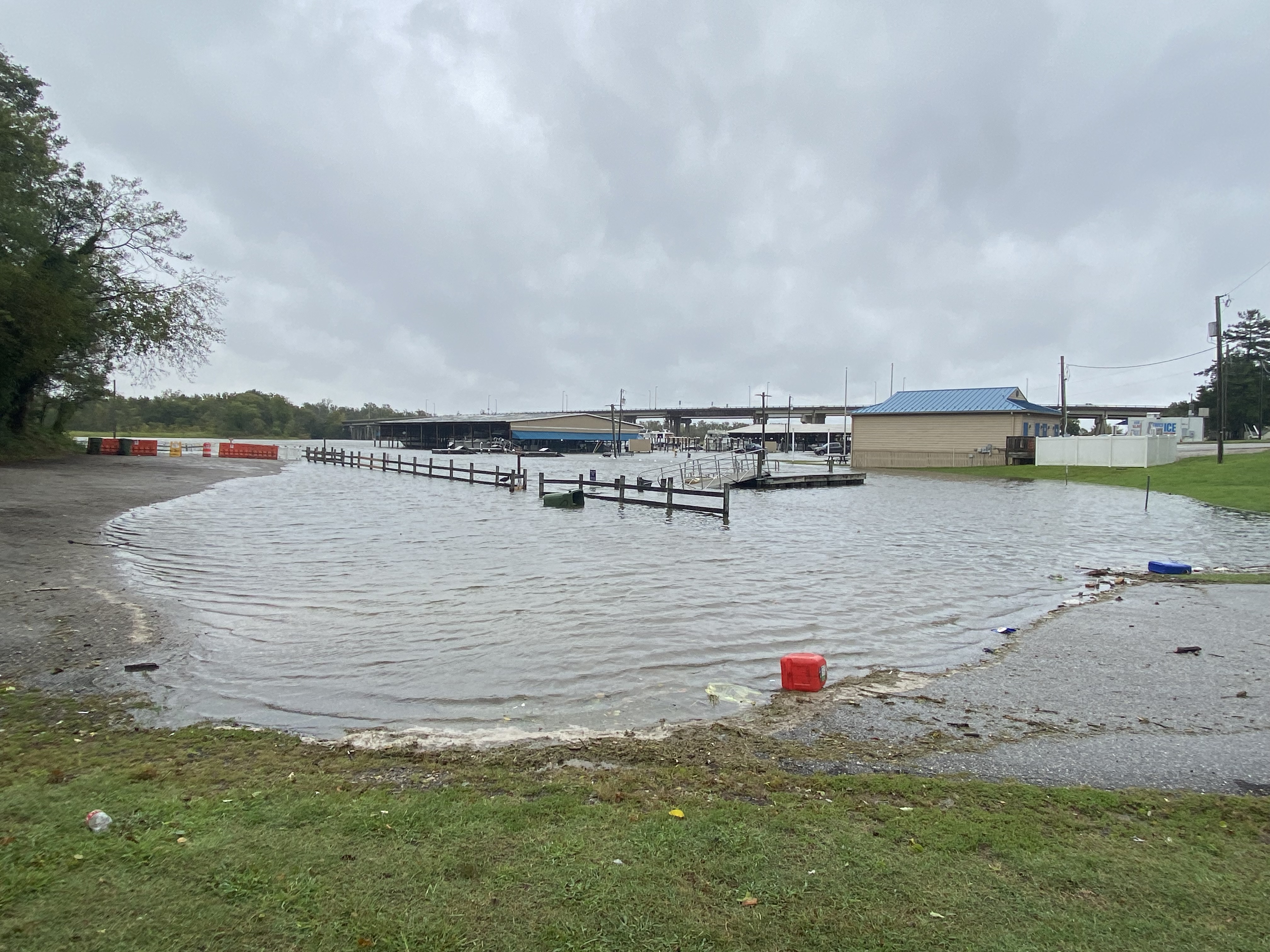 |
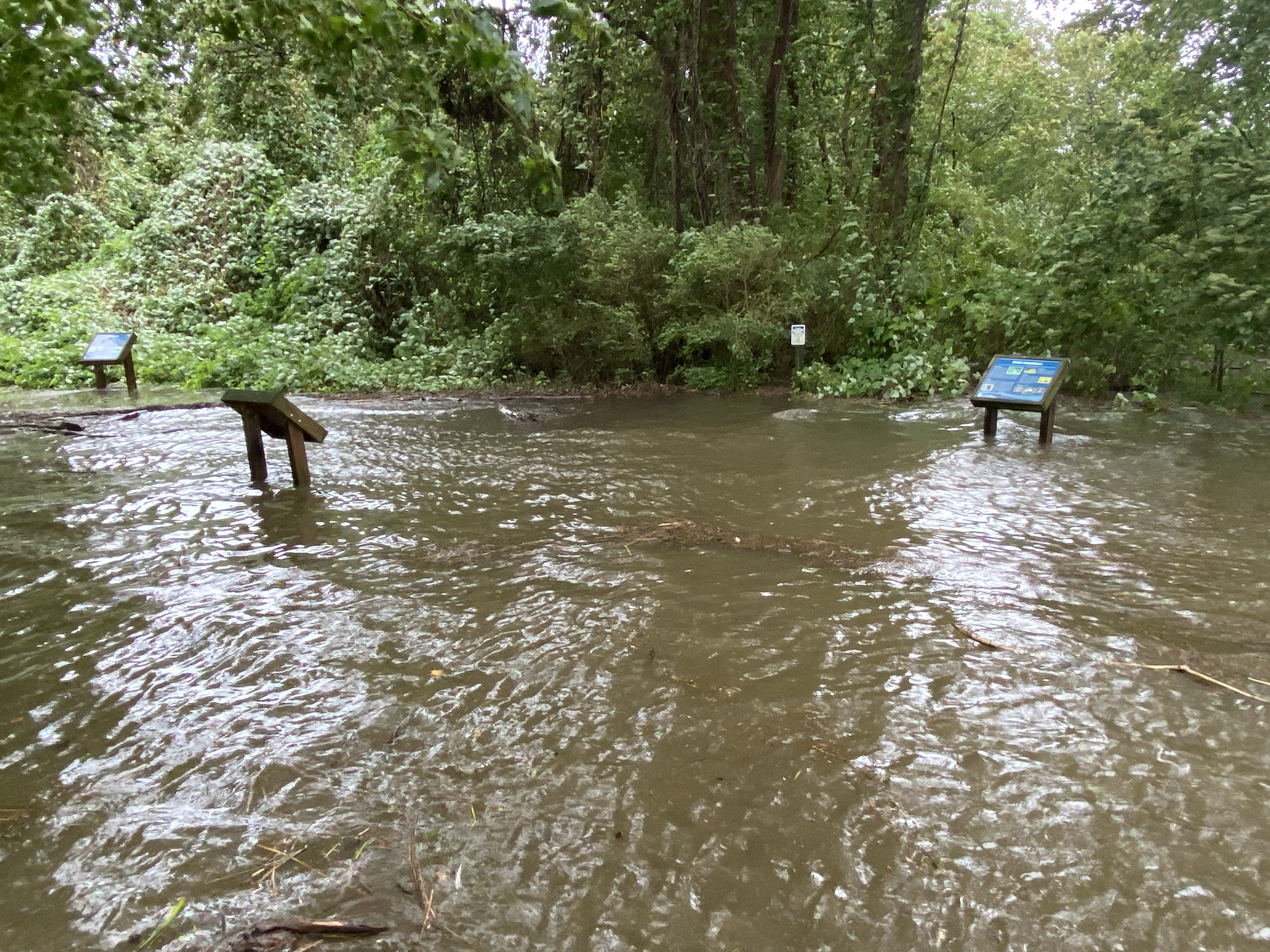 |
| Tidal Flooding in the Hopewell City Marina (credit: Jonathan McGee) |
More Tidal Flooding in Hopewell (credit: Jonathan McGee) |
Radar Loops
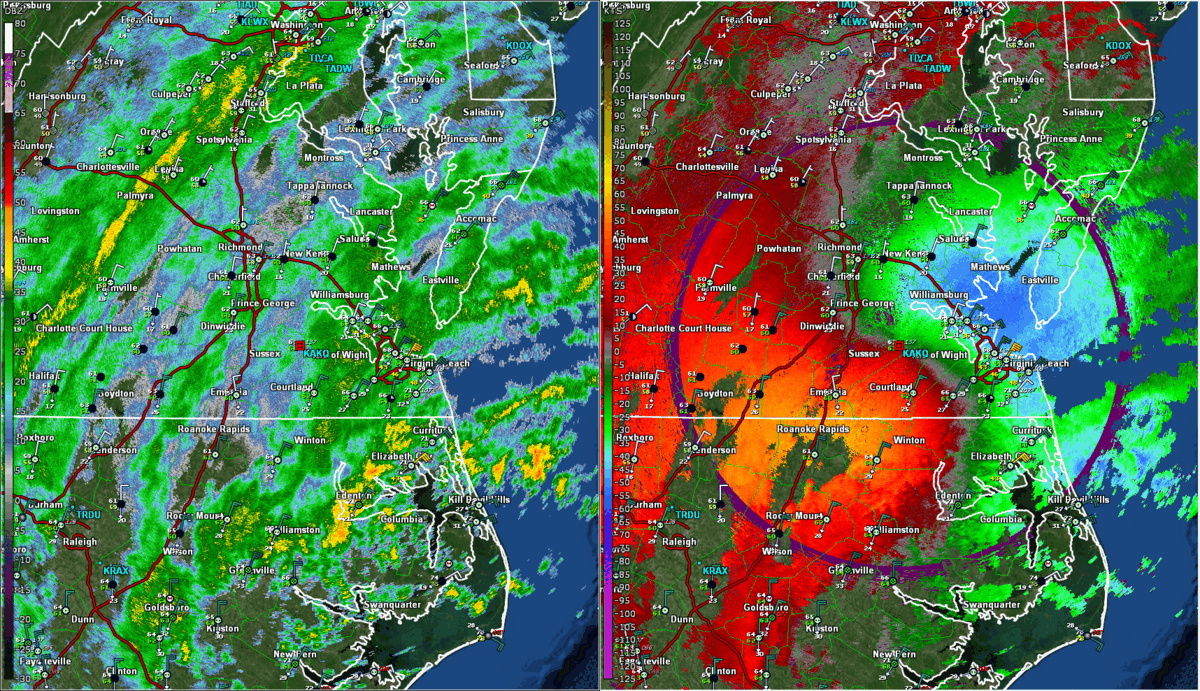 |
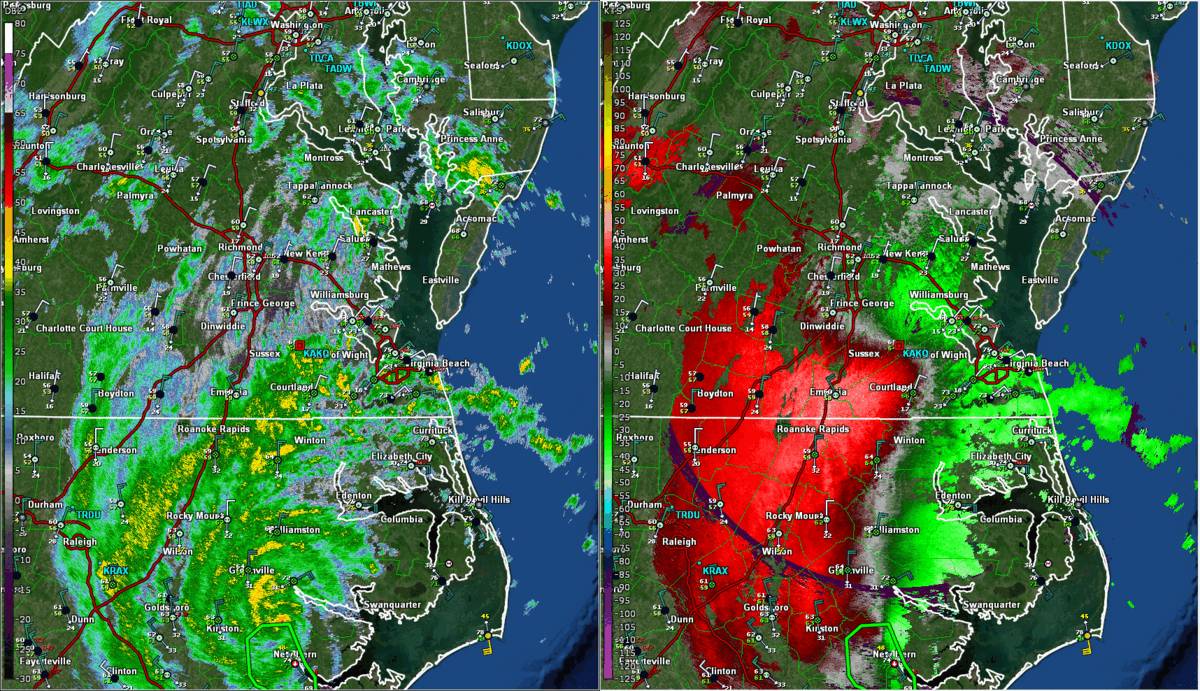 |
| Radar Loop of 0.5° Reflectivity and Base Velocity from 11 PM on 9/22 to 8 AM on 9/23 in 30 minute increments | Radar Loop of 0.5° Reflectivity and Base Velocity from 8:30 AM to 8 PM on 9/23 in 30 minute increments |
Wind Reports
Public Information Statement National Weather Service Wakefield VA 1028 PM EDT Sat Sep 23 2023 ...HIGHEST WIND REPORTS FROM TROPICAL STORM OPHELIA... Location Speed Time/Date Lat/Lon ...York... Seaford 37 MPH 0931 PM 09/22 37.19N/76.43W ...Wicomico... Salisbury Wicomico Airport 40 MPH 0654 AM 09/23 38.33N/75.50W ...Western Hanover... Richmond Hanover 30 MPH 0301 AM 09/23 37.70N/77.43W ...Western Currituck... 0.5 E Jarvisburg (WEATHERSTE 44 MPH 1040 PM 09/22 36.20N/75.86W Currituck 41 MPH 0605 PM 09/22 36.40N/76.02W 1.6 NW Moyock (WEATHERSTEM) 40 MPH 1150 AM 09/23 36.50N/76.16W ...Western Chesterfield... Richmond Chester 32 MPH 1024 AM 09/23 37.40N/77.52W ...Virginia Beach... Cape Henry 61 MPH 1030 PM 09/22 36.93N/76.01W Oceana NAS Souce 56 MPH 0910 PM 09/22 36.82N/76.02W Creeds 50 MPH 0946 PM 09/22 36.59N/76.02W Back Bay 46 MPH 0954 PM 09/22 36.67N/75.92W Virginia Beach 39 MPH 0631 PM 09/22 36.84N/76.06W Virginia Beach 37 MPH 0710 PM 09/22 36.77N/76.04W Virginia Beach 36 MPH 0755 PM 09/22 36.75N/75.99W Virginia Beach 33 MPH 0835 PM 09/22 36.91N/76.04W McHenry 30 MPH 0958 AM 09/23 36.75N/76.13W ...Sussex... Norfolk Wakefld 30 MPH 0319 AM 09/23 36.98N/77.00W ...Suffolk... Suffolk 37 MPH 1015 PM 09/22 36.68N/76.60W Gdr 30 MPH 0154 PM 09/23 36.61N/76.55W ...Somerset... Princess Anne 31 MPH 0459 AM 09/23 38.20N/75.69W ...Perquimans... Chapanoke 39 MPH 1215 PM 09/23 36.24N/76.36W Hertford 36 MPH 1130 AM 09/23 36.16N/76.32W ...Pasquotank... Elizabeth City Airport 49 MPH 1101 PM 09/22 36.27N/76.18W Elizabeth City 33 MPH 0113 PM 09/23 36.35N/76.28W ...Nottoway... Blackstone Fort 36 MPH 0335 PM 09/23 37.07N/77.95W Crewe 30 MPH 1115 AM 09/23 37.18N/78.10W ...Northumberland... Lewisetta, VA 48 MPH 0824 AM 09/23 38.00N/76.46W Heathsville 30 MPH 0145 AM 09/23 37.87N/76.42W ...Northampton... Kiptopeke, VA 40 MPH 0230 AM 09/23 37.17N/75.99W ...Norfolk/Portsmouth... Norfolk NAS Cham 55 MPH 0911 PM 09/22 36.92N/76.27W Norfolk Intl Airport 55 MPH 0912 PM 09/22 36.90N/76.20W Lafayette River 55 MPH 0723 PM 09/22 36.89N/76.32W South Norfolk Jordan Bridge 55 MPH 1103 PM 09/22 36.81N/76.29W South Craney Island 52 MPH 1106 PM 09/22 36.89N/76.34W Portsmouth 41 MPH 0959 PM 09/22 36.80N/76.33W Norfolk 36 MPH 0945 PM 09/22 36.90N/76.26W Norfolk 33 MPH 1115 PM 09/22 36.89N/76.21W Norfolk 32 MPH 1125 PM 09/22 36.89N/76.26W ...Newport News... Newport News 44 MPH 0916 PM 09/22 37.13N/76.50W Newport News 33 MPH 1220 AM 09/23 37.12N/76.53W Ft Eustis Felker 32 MPH 0920 AM 09/23 37.13N/76.62W ...Middlesex... Saluda 43 MPH 0515 AM 09/23 37.60N/76.45W Locust Hill 40 MPH 0520 AM 09/23 37.61N/76.52W Stingray Point 30 MPH 0705 PM 09/23 37.55N/76.30W ...Mecklenburg... Clarksville 33 MPH 0315 AM 09/23 36.60N/78.55W ...Mathews... New Point Comfort 55 MPH 1051 PM 09/22 37.33N/76.27W Gwynns Island 52 MPH 0215 AM 09/23 37.49N/76.27W North 33 MPH 0230 AM 09/23 37.45N/76.45W ...Maryland Beaches... Ocean City 49 MPH 0337 AM 09/23 38.32N/75.12W Us 50 Eb On Oc Drawbridge Wi 46 MPH 0254 AM 09/23 38.33N/75.09W 1 SSW Ocean City 45 MPH 0455 AM 09/23 38.33N/75.08W ...Lunenburg... 2 WSW Kenbridge 44 MPH 1225 PM 09/23 36.95N/78.17W ...Isle of Wight... Carrollton 32 MPH 1136 PM 09/22 36.93N/76.53W Franklin J B Ros 32 MPH 0235 AM 09/23 36.70N/76.90W Smithfield 30 MPH 1049 PM 09/22 36.99N/76.74W ...Hertford... Ahoskie Tri Coun 33 MPH 1125 PM 09/22 36.28N/77.17W ...Hampton/Poquoson... Poquoson 52 MPH 1046 PM 09/22 37.11N/76.32W Langley AFB Hamp 47 MPH 1221 AM 09/23 37.08N/76.33W ...Eastern Louisa... Mineral 41 MPH 0510 PM 09/23 38.00N/77.91W Louisa 33 MPH 0635 PM 09/23 38.02N/77.97W Bumpass 30 MPH 0115 PM 09/23 37.97N/77.75W ...Eastern Henrico... Richmond Intl Airport 38 MPH 0220 AM 09/23 37.52N/77.32W ...Eastern Essex... Tappahannock 30 MPH 0655 AM 09/23 37.87N/76.90W ...Eastern Currituck... 3.0 E Knotts Island (WEATHER 53 MPH 0950 PM 09/22 36.52N/75.87W 3.4 S Corolla (WEATHERSTEM) 44 MPH 1040 PM 09/22 36.33N/75.81W ...Dorchester... Cambridge, MD 37 MPH 1236 PM 09/23 38.57N/76.07W Cambridge 37 MPH 0300 PM 09/23 38.55N/76.24W Blackwater 32 MPH 0855 AM 09/23 38.45N/76.09W ...Dinwiddie... Petersburg 33 MPH 0315 PM 09/23 37.17N/77.52W ...Cumberland... Farmville 32 MPH 1155 AM 09/23 37.35N/78.42W ...Chowan... Edenton 39 MPH 1050 AM 09/23 36.02N/76.57W ...Chesapeake... Fentress Naval 45 MPH 1144 PM 09/22 36.70N/76.13W Chesapeake 40 MPH 0915 PM 09/22 36.83N/76.40W Money Point 36 MPH 0930 PM 09/22 36.78N/76.30W Chesapeake 35 MPH 1015 PM 09/22 36.67N/76.32W Norfolk Hampton 35 MPH 0535 PM 09/22 36.78N/76.45W Chesapeake 33 MPH 0300 PM 09/23 36.78N/76.26W ...Caroline... Fort Walker 30 MPH 0506 PM 09/23 38.04N/77.24W ...Brunswick... South Hill Airport 39 MPH 1235 PM 09/23 36.68N/78.03W Ebony 32 MPH 1125 AM 09/23 36.55N/78.03W ...Bertie... Greens Cross 42 MPH 1117 AM 09/23 36.02N/76.89W Peanut Belt Research Station 30 MPH 1055 AM 09/23 36.13N/77.18W ...Accomack... Wallops Island 56 MPH 0152 AM 09/23 37.93N/75.47W Wachapreague, VA 55 MPH 1254 AM 09/23 37.61N/75.69W Tangier Sound Light 55 MPH 0440 AM 09/23 37.79N/75.97W Wachapreague 49 MPH 0246 AM 09/23 37.60N/75.69W Onancock 39 MPH 1013 PM 09/22 37.65N/75.88W Melfa Accomack 38 MPH 0255 AM 09/23 37.63N/75.77W Parksley 37 MPH 0245 AM 09/23 37.73N/75.61W ...Maritime Stations... 6 NW Cape Henry 63 MPH 0906 PM 09/22 37.00N/76.09W Chesapeake Light Tower 63 MPH 0750 PM 09/22 36.90N/75.71W Third Island 62 MPH 1137 PM 09/22 37.04N/76.08W 5 NE Plum Tree Island Refuge 60 MPH 1042 PM 09/22 37.20N/76.27W Cape Henry, VA 60 MPH 1030 PM 09/22 36.93N/76.01W Ocean City 59 MPH 0938 PM 09/22 38.33N/75.08W Middle Ground Lighthouse 56 MPH 1232 AM 09/23 36.95N/76.39W Rappahannock Light 55 MPH 1054 PM 09/22 37.54N/76.02W Lynnhaven Inlet Light 2 55 MPH 0901 PM 09/22 36.92N/76.09W 2 E Stingray Point 54 MPH 0512 AM 09/23 37.57N/76.26W Poquoson River Light 54 MPH 1056 PM 09/22 37.16N/76.38W Rudee Inlet 54 MPH 0934 PM 09/22 36.83N/75.97W Willoughby Deguassing Statio 53 MPH 0906 PM 09/22 36.98N/76.32W Hampton Flats 53 MPH 0953 PM 09/22 36.98N/76.36W Thimble Shoals 53 MPH 1030 PM 09/22 37.05N/76.26W 8 NW Cape Henry 51 MPH 1048 PM 09/22 37.03N/76.08W Sandbridge 49 MPH 0635 PM 09/22 36.70N/75.93W , VA 48 MPH 1135 PM 09/22 37.01N/76.31W Yorktown USCG Training Cente 47 MPH 0918 PM 09/22 37.23N/76.48W Ocean City Inlet 43 MPH 0724 AM 09/23 38.33N/75.09W Plantation Flats 43 MPH 1255 AM 09/23 37.26N/76.03W Machipongo 42 MPH 1120 PM 09/22 37.41N/75.97W Assateague South Point 41 MPH 0120 AM 09/23 38.21N/75.20W Silver Beach 40 MPH 1108 PM 09/22 37.49N/75.97W Ocean City 39 MPH 0345 PM 09/22 38.35N/75.08W Dominion Terminal 38 MPH 1218 AM 09/23 36.96N/76.42W &&
Rain Reports
Public Information Statement National Weather Service Wakefield VA 1113 AM EDT Sun Sep 24 2023 ...STORM TOTAL PRECIPITATION REPORTS FROM TROPICAL STORM OPHELIA... Location Amount Time/Date Provider ...Maryland... ...Somerset County... Crisfield 0.9 ENE 3.55 in 0700 AM 09/24 COCORAHS ...Wicomico County... Fruitland 1.8 ENE 3.69 in 0700 AM 09/24 COCORAHS Salisbury 2.1 SSE 3.44 in 0700 AM 09/24 COCORAHS Parsonsburg 1.6 WNW 3.38 in 0700 AM 09/24 COCORAHS Powellville 2.86 in 1048 AM 09/24 RAWS ...Worcester County... Ocean Pines 3.43 in 1055 AM 09/24 CWOP Snow Hill 0.4 S 2.83 in 0700 AM 09/24 COCORAHS Ocean City 1.84 in 0953 AM 09/24 ASOS ...North Carolina... ...Bertie County... Greens Cross 3.82 in 1017 AM 09/24 RAWS ...Chowan County... Edenton 4.3 SE 5.15 in 0700 AM 09/24 COCORAHS Edenton 0.5 NE 4.38 in 0700 AM 09/24 COCORAHS Edenton 4.11 in 1057 AM 09/24 CWOP 1 NNE Rockyhock 4.08 in 1055 AM 09/24 AWS Edenton 7.4 ESE 3.76 in 0700 AM 09/24 COCORAHS Edenton 13.3 NNW 3.69 in 0800 AM 09/24 COCORAHS Edenton 3.63 in 1050 AM 09/24 AWOS ...Currituck County... 3 SSE Northwest 4.12 in 1055 AM 09/24 AWS ...Northampton County... Nc Fire Raws No. 6 3.43 in 1018 AM 09/24 RAWS Henrico 2.54 in 1045 AM 09/24 CWOP ...Pasquotank County... Elizabeth City 7.7 SSW 4.83 in 0700 AM 09/24 COCORAHS Elizabeth City 4.20 in 1013 AM 09/24 RAWS Elizabeth City 3.94 in 1037 AM 09/24 CWOP Elizabeth City 5.1 SSE 3.75 in 0700 AM 09/24 COCORAHS Elizabeth City Airport 3.16 in 1054 AM 09/24 ASOS ...Perquimans County... Chapanoke 4.63 in 1100 AM 09/24 CWOP Hertford 4.50 in 1045 AM 09/24 CWOP Hertford 4.05 in 1100 AM 09/24 CWOP Hertford 5.2 SSE 3.88 in 0700 AM 09/24 COCORAHS ...Virginia... ...Accomack County... Onley 0.6 SE 2.81 in 0800 AM 09/24 COCORAHS Melfa Accomack 2.42 in 1055 AM 09/24 AWOS Wallops Island 2.16 in 0954 PM 09/23 ASOS ...Brunswick County... Alberta 5 N 4.67 in 0800 AM 09/24 COOP ...Caroline County... Ruther Glen 1.7 ENE 3.83 in 0700 AM 09/24 COCORAHS Faph_south 1 3.42 in 1006 AM 09/24 RAWS Faph_delos 3.38 in 1006 AM 09/24 RAWS ...Chesterfield County... Chesterfield 4.62 in 1045 AM 09/24 CWOP Bon Air 4.47 in 0700 AM 09/24 Public Midlothian 7.9 S 4.17 in 0700 AM 09/24 COCORAHS Midlothian 4.7 SSW 4.11 in 0700 AM 09/24 COCORAHS 2 SSW Chester 4.11 in 0800 AM 09/24 COCORAHS Midlothian 3.0 NNW 3.93 in 0800 AM 09/24 COCORAHS Moseley 1.7 NNE 3.84 in 0700 AM 09/24 COCORAHS Winterpock 3.77 in 1045 AM 09/24 CWOP Midlothian 5.4 S 3.66 in 0700 AM 09/24 COCORAHS CHESTERFIELD 3.62 in 1053 AM 09/24 CWOP Richmond Chester 3.58 in 1056 AM 09/24 AWOS Chesterfield 3.51 in 1100 AM 09/24 CWOP Chesterfield 3.46 in 1055 AM 09/24 CWOP 3 SSE Chester 3.30 in 1052 AM 09/24 NWS Employee Matoaca 3.26 in 1055 AM 09/24 CWOP Midlothian 3.5 SSW 3.18 in 0800 AM 09/24 COCORAHS Chester 6.6 E 2.79 in 0500 AM 09/24 COCORAHS ...City of Chesapeake County... Chesapeake 4.90 in 1100 AM 09/24 CWOP Fentress Naval 4.06 in 1056 AM 09/24 AWOS 8.0 SW Chesapeake Airport 4.02 in 1000 AM 09/24 HADS Chesapeake 7.3 NE 4.01 in 0800 AM 09/24 COCORAHS Chesapeake 3.83 in 1056 AM 09/24 CWOP Deep Creek 3.47 in 1030 AM 09/24 HADS Chesapeake 1.8 NE 3.17 in 0700 AM 09/24 COCORAHS ...City of Franklin County... Hunterdale 4.67 in 0600 AM 09/24 COCORAHS ...City of Hampton County... Hampton 7.2 W 2.74 in 0630 AM 09/24 COCORAHS Hampton 3.4 W 2.65 in 0839 AM 09/24 COCORAHS ...City of Newport News County... 1 WSW Beaconsdale 2.82 in 0700 AM 09/24 COCORAHS Newport News 2.5 ESE 2.65 in 0700 AM 09/24 COCORAHS Newport News 2.50 in 0954 PM 09/23 ASOS ...City of Norfolk County... Norfolk Intl Airport 2.29 in 0551 AM 09/24 ASOS ...City of Portsmouth County... Portsmouth 4.1 SSE 3.45 in 0700 AM 09/24 COCORAHS Portsmouth 3.39 in 0559 AM 09/24 CWOP ...City of Richmond County... Richmond 2.5 WNW 4.97 in 0700 AM 09/24 COCORAHS Richmond 0.6 SW 4.78 in 0700 AM 09/24 COCORAHS Richmond 1.1 WSW 4.61 in 0700 AM 09/24 COCORAHS Richmond 3.9 NW 4.61 in 0700 AM 09/24 COCORAHS Richmond 1.1 SE 4.27 in 0900 AM 09/24 COCORAHS Richmond 4.2 NNE 4.10 in 0710 AM 09/24 COCORAHS Richmond 1.7 N 3.74 in 0700 AM 09/24 COCORAHS ...City of Suffolk County... Suffolk 1.4 NNW 3.19 in 0731 AM 09/24 COCORAHS Suffolk 3.09 in 1035 AM 09/24 AWOS ...City of Virginia Beach County... Virginia Beach 4.37 in 1045 AM 09/24 CWOP Virginia Beach 2.4 N 3.92 in 0700 AM 09/24 COCORAHS Virginia Beach 3.84 in 1100 AM 09/24 CWOP Virginia Beach 8.2 NNW 3.68 in 0700 AM 09/24 COCORAHS VIRGINIA BEACH 3.54 in 1100 AM 09/24 CWOP Virginia Beach 10.1 N 2.79 in 0700 AM 09/24 COCORAHS Virginia Beach 6.0 WNW 2.74 in 0700 AM 09/24 COCORAHS Virginia Beach 2.71 in 1045 AM 09/24 CWOP Virginia Beach 9.1 NNW 2.56 in 0700 AM 09/24 COCORAHS ...City of Williamsburg County... Williamsburg 1.4 ENE 3.38 in 0700 AM 09/24 COCORAHS Williamsburg 1.3 SSW 2.70 in 0615 AM 09/24 COCORAHS ...Dinwiddie County... Petersburg 3.66 in 1055 AM 09/24 AWOS ...Gloucester County... James Store 1.5 WNW 3.22 in 0726 AM 09/24 COCORAHS Gloucester Point 4.7 NW 2.90 in 0800 AM 09/24 COCORAHS Gloucester Courthouse 3.3 SS 2.73 in 0700 AM 09/24 COCORAHS Gloucester Courthouse 2.1 S 2.56 in 0700 AM 09/24 COCORAHS Zanoni 1.7 SSE 2.55 in 0800 AM 09/24 COCORAHS ...Goochland County... Manakin-Sabot 1.6 SW 5.00 in 0700 AM 09/24 COCORAHS Crozier 3.70 in 0700 AM 09/24 COOP ...Greensville County... Purdy 3.81 in 1016 PM 09/23 Trained Spotter ...Hanover County... Montpelier 1.6 NE 4.79 in 0819 AM 09/24 COCORAHS Rockville 5.1 W 4.62 in 0700 AM 09/24 COCORAHS Beaverdam 4.3 ESE 4.54 in 0700 AM 09/24 COCORAHS Ashland 4.01 in 1100 AM 09/24 CWOP Montpelier 4.8 E 3.96 in 0729 AM 09/24 COCORAHS Mechanicsville 6.9 SE 3.75 in 0700 AM 09/24 COCORAHS Richmond Hanover 3.72 in 0554 AM 09/24 ASOS Montpelier 3.69 in 1045 AM 09/24 CWOP ...Henrico County... Richmond 4.84 in 1100 AM 09/24 CWOP Richmond 4.76 in 1056 AM 09/24 CWOP Henrico 5.8 W 4.71 in 0832 AM 09/24 COCORAHS Richmond 4.71 in 1045 AM 09/24 CWOP Glen Allen 4.69 in 1055 AM 09/24 CWOP Richmond 5.3 NW 4.63 in 0700 AM 09/24 COCORAHS Glen Allen 4.52 in 1057 AM 09/24 CWOP Glen Allen 4.29 in 1010 AM 09/24 CWOP Tuckahoe 3.99 in 1100 AM 09/24 AWS Laurel 0.8 N 3.83 in 0830 AM 09/24 COCORAHS Richmond Intl Airport 3.10 in 1054 AM 09/24 ASOS Highland Springs 8.1 SE 2.94 in 0830 AM 09/24 COCORAHS Montrose 4.7 SSE 2.79 in 0700 AM 09/24 COCORAHS ...Isle of Wight County... Smithfield 0.7 NE 2.89 in 0700 AM 09/24 COCORAHS Smithfield 1.3 SW 2.70 in 0630 AM 09/24 COCORAHS Smithfield 7.7 NNW 2.55 in 0700 AM 09/24 COCORAHS ...James City County... Williamsburg 3.2 WNW 3.70 in 0700 AM 09/24 COCORAHS Williamsburg 3.2 NW 3.21 in 0800 AM 09/24 COCORAHS Williamsburg 4.1 WNW 3.19 in 0700 AM 09/24 COCORAHS Williamsburg 3.2 W 2.96 in 0700 AM 09/24 COCORAHS Williamsburg 8.2 NW 2.90 in 0800 AM 09/24 COCORAHS Toano 1.1 SSW 2.89 in 0700 AM 09/24 COCORAHS Williamsburg 3.4 W 2.84 in 0700 AM 09/24 COCORAHS Williamsburg 6.8 NW 2.82 in 0700 AM 09/24 COCORAHS ...King and Queen County... Shacklefords 4.8 NE 2.84 in 0600 AM 09/24 COCORAHS ...Lancaster County... Mollusk 3.33 in 1034 AM 09/24 CWOP ...Louisa County... Louisa 3.34 in 1045 AM 09/24 CWOP Mineral 6.9 NNE 3.05 in 0700 AM 09/24 COCORAHS Louisa 5.1 WSW 2.41 in 0700 AM 09/24 COCORAHS ...Mathews County... Mathews 1.5 NNE 2.40 in 0700 AM 09/24 COCORAHS ...Middlesex County... Hartfield 5.94 in 1056 AM 09/24 CWOP Locust Hill 1.1 ENE 2.59 in 0700 AM 09/24 COCORAHS ...Northampton County... Nassawadox 4.6 SW 2.74 in 0700 AM 09/24 COCORAHS ...Northumberland County... Heathsville 4.6 SE 2.93 in 0700 AM 09/24 COCORAHS ...Nottoway County... Blackstone Fort 3.12 in 1055 AM 09/24 AWOS Crewe 2.34 in 1055 AM 09/24 AWOS ...Powhatan County... Powhatan 7.8 NE 4.47 in 0800 AM 09/24 COCORAHS ...Prince George County... Prince George 3.02 in 0700 AM 09/24 COCORAHS South Prince George 6.8 S 2.83 in 0700 AM 09/24 COCORAHS ...Southampton County... Franklin 2.6 WNW 4.55 in 0908 AM 09/24 COCORAHS Ivor 2.7 ESE 4.10 in 0700 AM 09/24 COCORAHS Drewryville 2.3 SW 3.55 in 0750 AM 09/24 COCORAHS Sedley 3.7 N 3.21 in 0700 AM 09/24 COCORAHS ...Surry County... Claremont 0.2 SW 2.54 in 0738 AM 09/24 COCORAHS ...Sussex County... Norfolk Wakefld 2.34 in 0954 PM 09/23 ASOS ...York County... Williamsburg 4.6 NNW 2.72 in 0800 AM 09/24 COCORAHS Williamsburg 3.4 ENE 2.65 in 0800 AM 09/24 COCORAHS &&
Storm History
To be added shortly...
| Image Caption 1 | Image Caption 2 |
Environment
Synoptic summary.
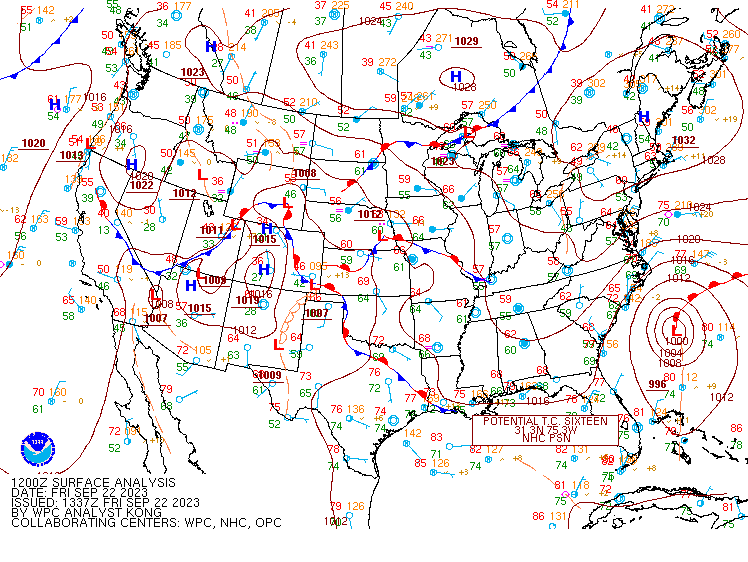 |
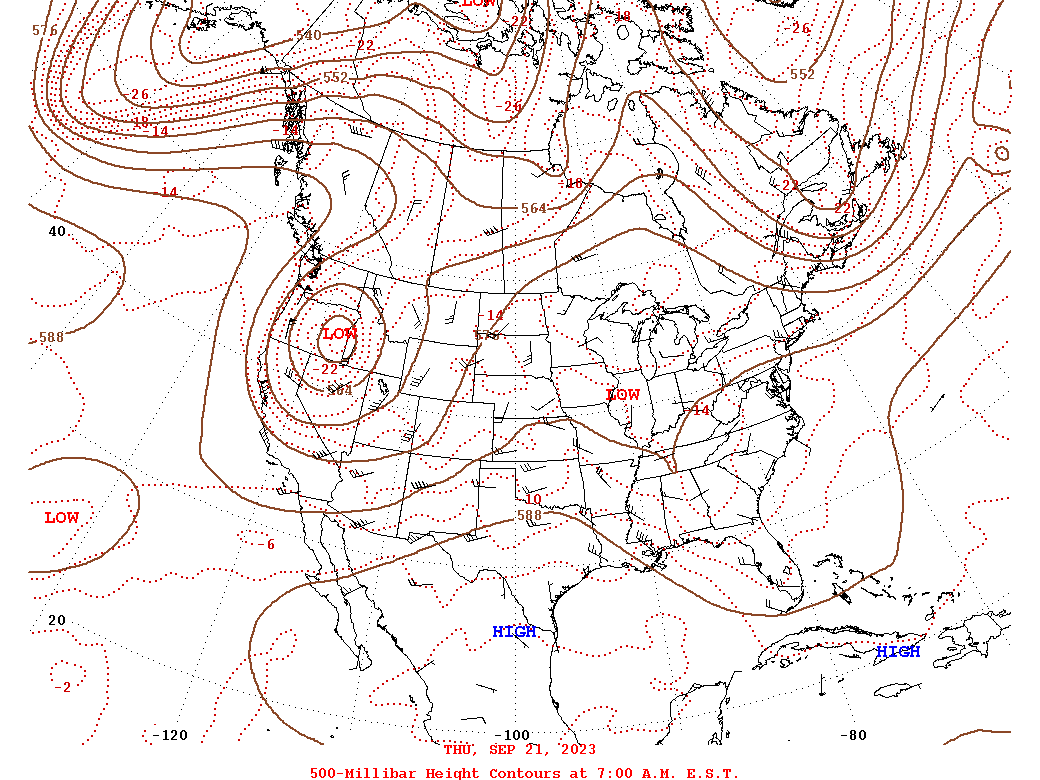 |
| Loop of WPC Surface Analysis from 12z/8 AM on 9/22 to 12z/8 AM on 9/24 | Loop of WPC 500mb Analysis from 12z/8 AM on 9/21 to 12z/8 AM on 9/24 |
Near-storm environment summary.
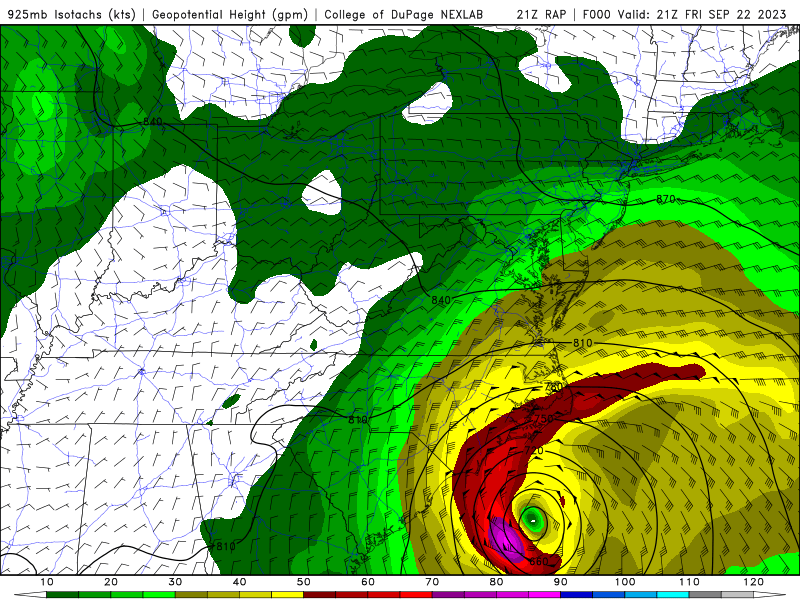 |
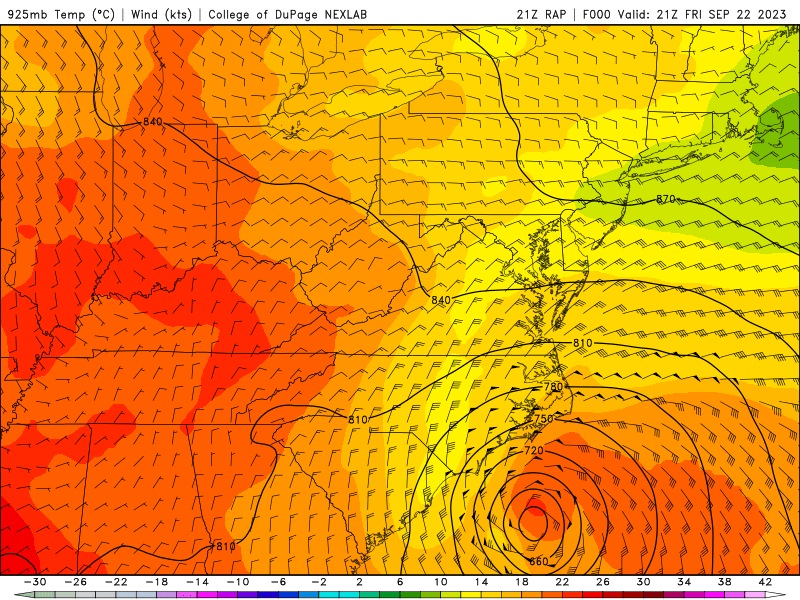 |
| Loop of 925mb RAP Analysis Heights/Winds from 21z/5 PM on 9/22 to 15z/11 AM on 9/23 | Loop of 925mb Rap Analysis Temperatures/Heights/Winds from 21z/5 PM on 9/22 to 15z/11 AM on 9/23 |
Additional environmental data.
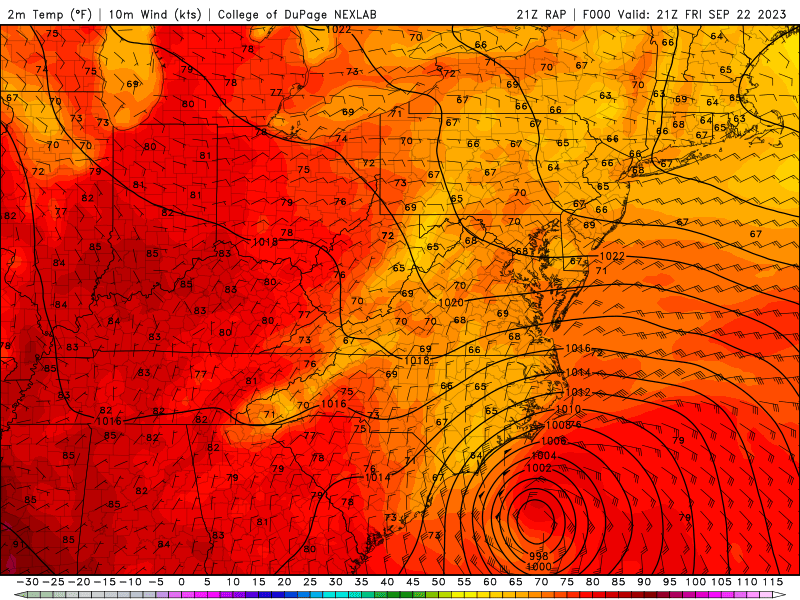 |
| Loop of Surface RAP Analysis MSLP/Temperatures/Winds from 21z/5 PM on 9/22 to 15z/11 AM on 9/23 |
 |
Media use of NWS Web News Stories is encouraged! Please acknowledge the NWS as the source of any news information accessed from this site. |
 |